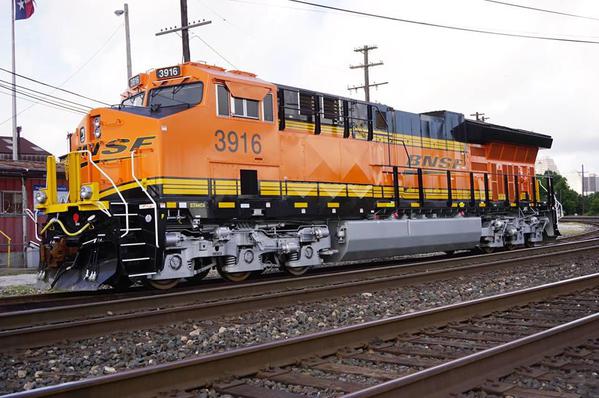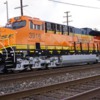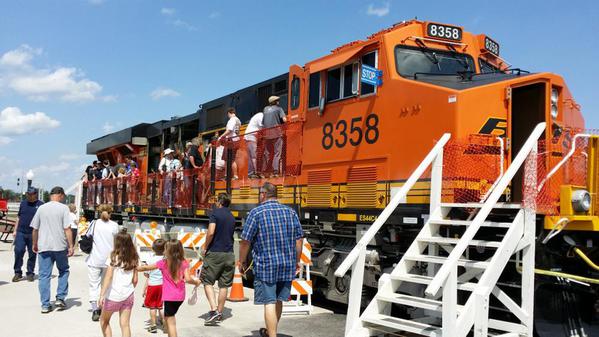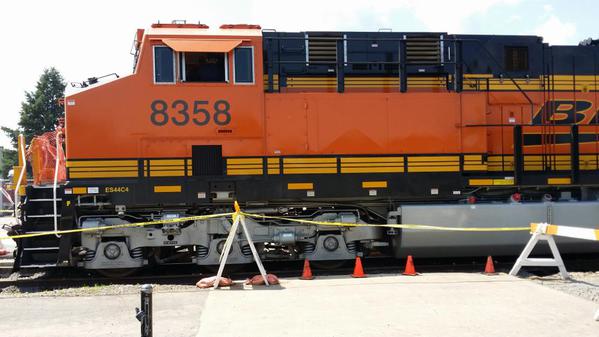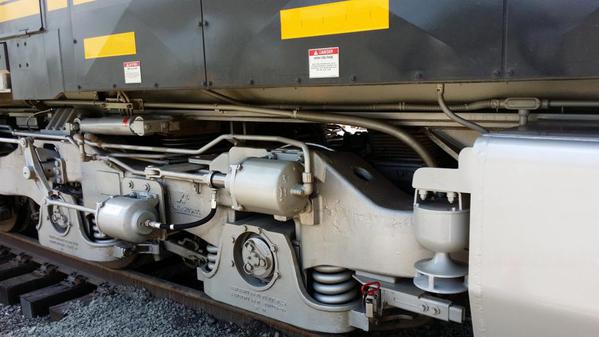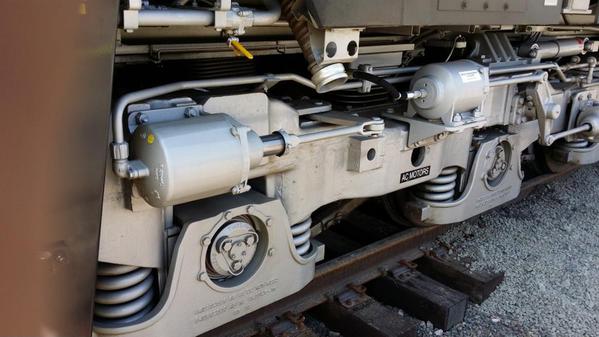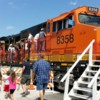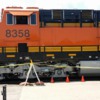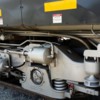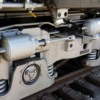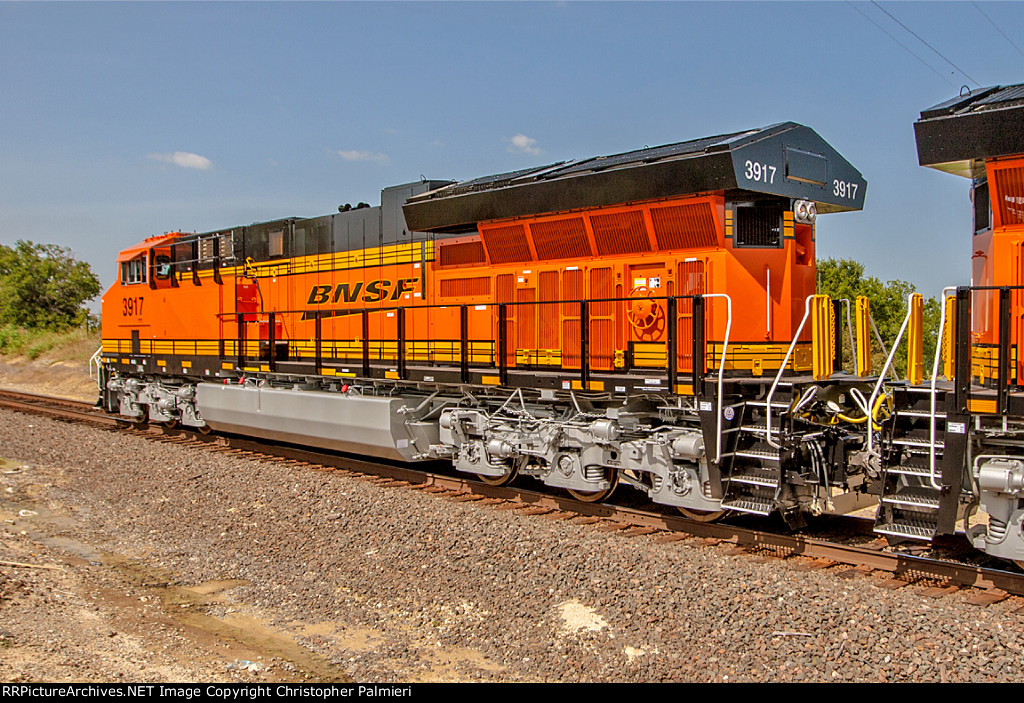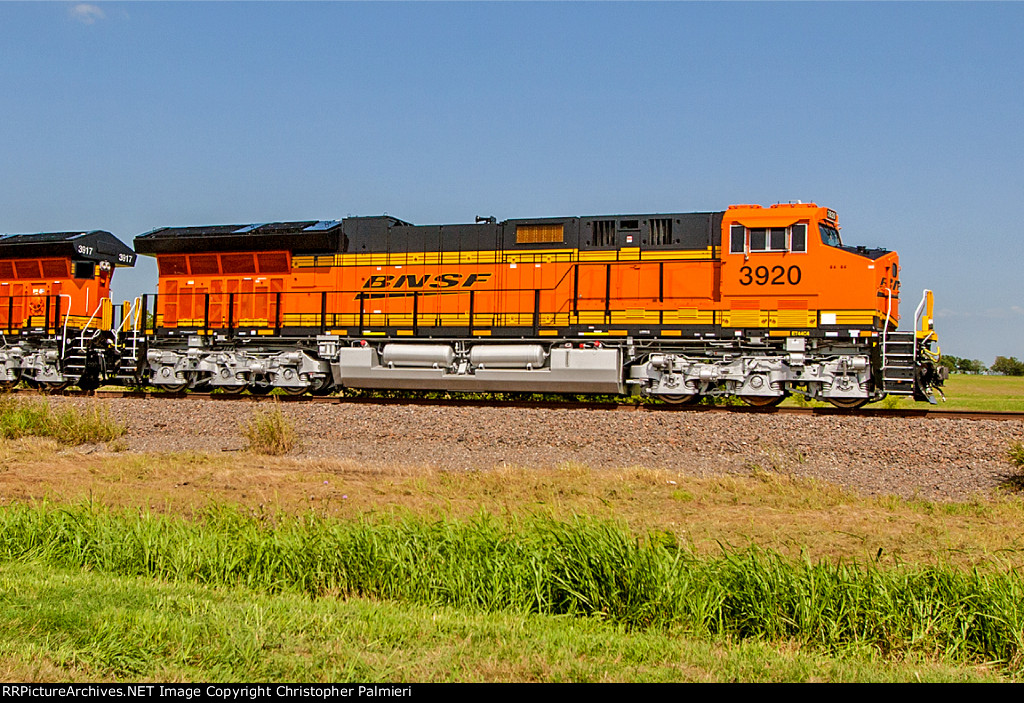Originally Posted by naveenrajan:
. . . The truck while looking similar to a typical GE Hi-Ad truck has no traction motor on the center axle. But the center axle has linkages that raise the center axle to put more weight on the axles with traction motors to increase the traction when needed, or lower it to evenly distribute the weight across all axles.
BNSF has a number of units in service with these trucks. When driving (and pacing trains, of course!) between Clovis and Amarillo on U.S. Highway 60, I have looked over at the trucks and have sometimes seen daylight beneath the center axle.
BNSF has hundreds and hundreds of GE's that are similar in appearance, and the roster is not orderly as to numbering, so I have to get out the roster book to know what model I am looking at. (No, not while driving alongside a train.  ) BNSF has a commitment to purchase or lease (I think the number is 300) new GE's annually, even while storing older, less-efficient, locomotives. Apparently, it is financially advantageous, but, to fully understand that aspect of it requires a professional knowledge of corporate finance and tax practices.
) BNSF has a commitment to purchase or lease (I think the number is 300) new GE's annually, even while storing older, less-efficient, locomotives. Apparently, it is financially advantageous, but, to fully understand that aspect of it requires a professional knowledge of corporate finance and tax practices.
An interesting sidebar: At Erie, GE has its own railroad for testing newly-manufactured locomotives. However, the new plant at Haslet, Texas, uses the BNSF main track with BNSF crews running the locomotives under the direction of GE's testing crew, who have all kinds of probes and computer connections on the new engines, to check performance of all systems before delivery.






